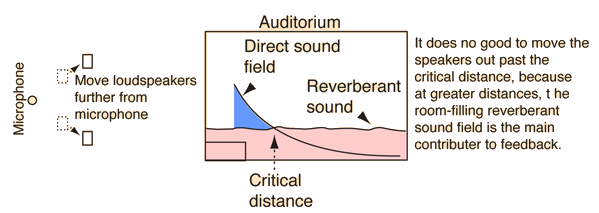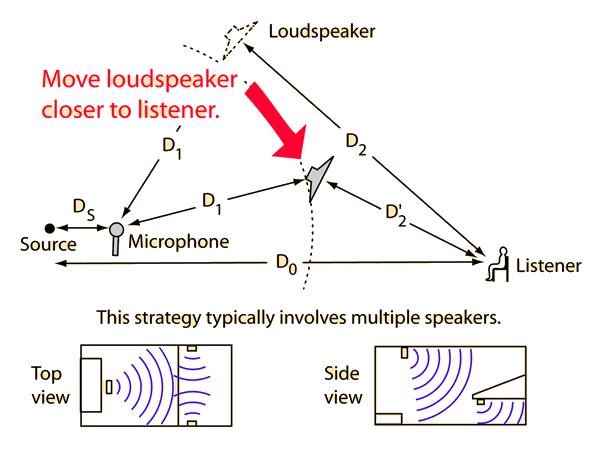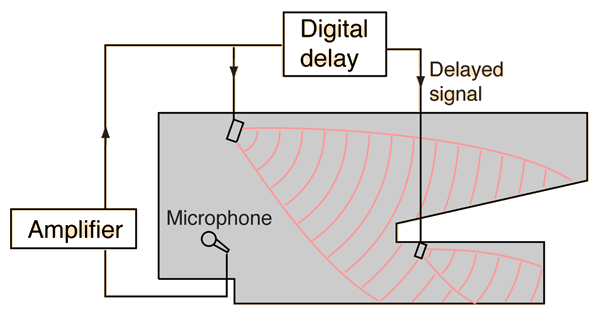Moving Loudspeaker Farther from Microphone
The first practical step which is usually taken when a portable sound system rings from feedback is to move the loudspeaker farther from the microphone. The amount of anticipated improvement in the potential acoustic gain can be modeled for the simplified amplification system. In a real auditorium, you cannot achieve as much improvement as that modeled amount because of reverberation. In general, it does no good to move the loudspeaker out past the critical distance at which the reverberant sound field contributes as much to feedback as the direct sound field. As a practical measure, this critical distance for the speakers must be determined by experiment, moving the speakers farther out until you can no longer increase the gain before feedback.

| Ways to increase P.A.G. |
Sound reproduction concepts
| HyperPhysics***** Sound | R Nave |

